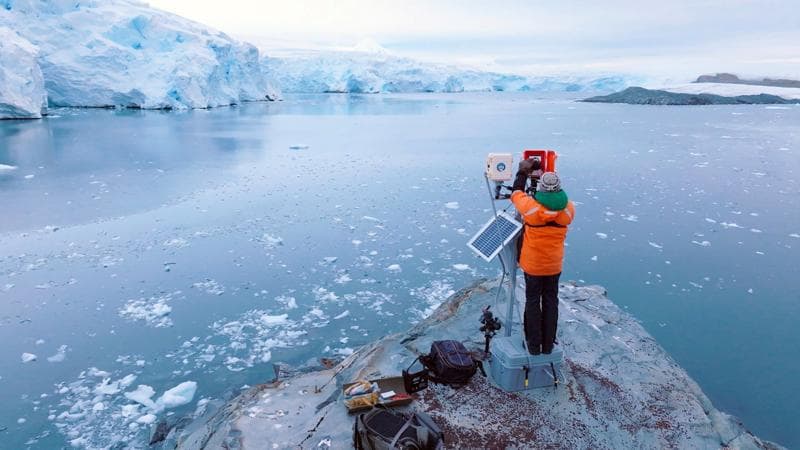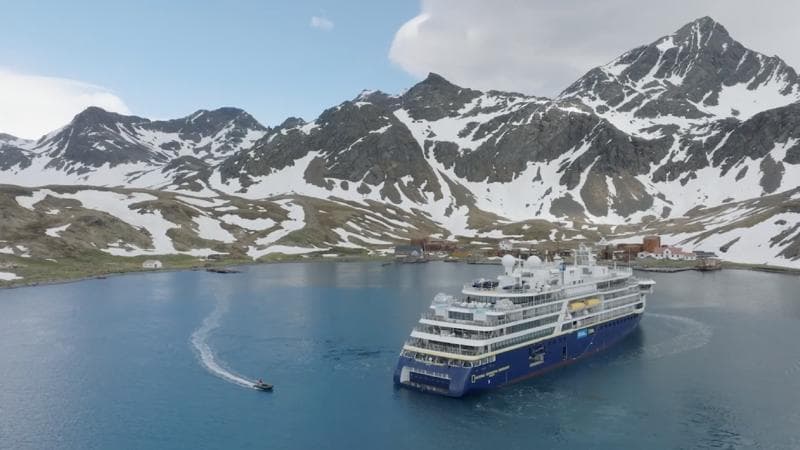What to Expect: Taking the Polar Plunge
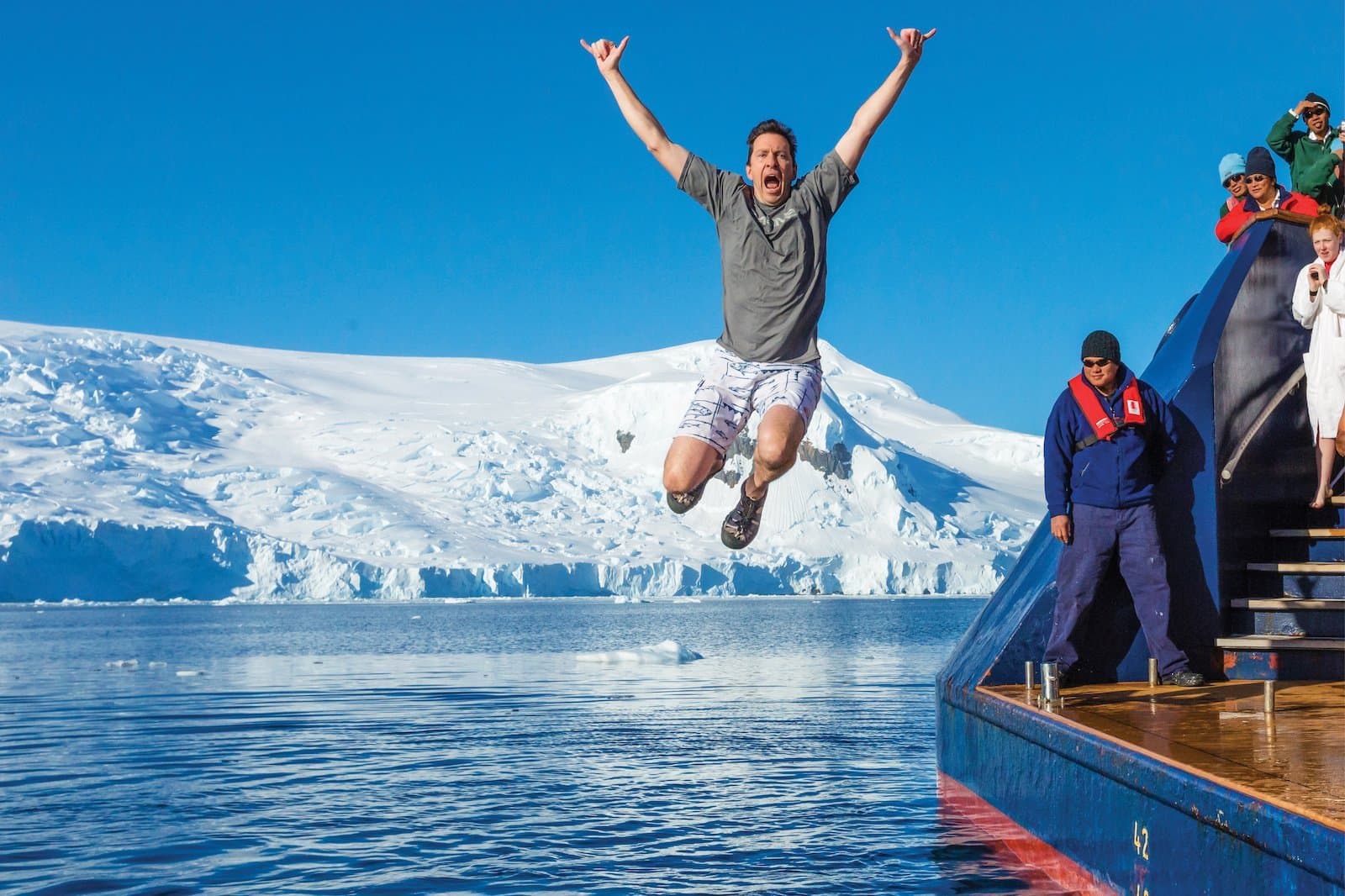
As a northerner and enthusiast of cold water, naturalist Adrienne Bosworth may be a biased source, but she thinks that "vaulting into the frigid ocean is one of the biggest favors you can do your body and the surest way to turn around a gloomy disposition!" As she shares, "the hardest part is the anticipation, the easiest part is getting out, and the part worth focusing on is the unparalleled rush of warmth and vigor that floods your body in the moments after you emerge." Here, Bosworth answers top questions about this highly anticipated event aboard our ships so you can be prepared before you take the plunge.
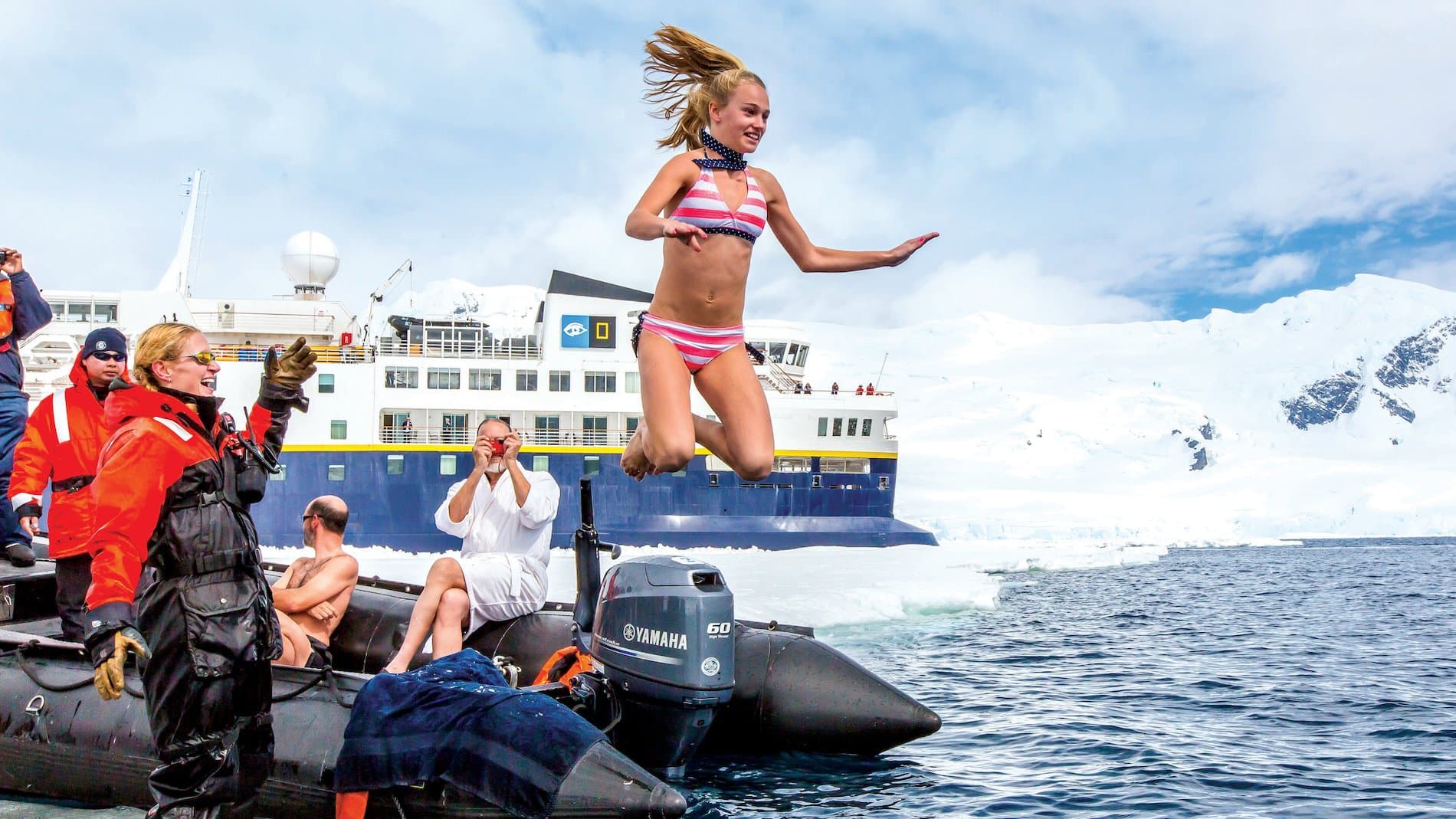
Photo: Michael S. Nolan
How cold is the water on a polar plunge?
The temperature of the waters that we plunge into on Lindblad Expeditions-National Geographic voyages varies quite a bit depending on location and season, but a safe bet is that the water is going to be between 35-45 degrees Fahrenheit (approximately 2-8 degrees Celsius). For dramatic effect, we do try to stage the polar plunge somewhere near a photogenic chunk of ice. In Antarctica, with ample bergs of all sizes creating a frosty gauntlet, we have many options. Cruising regions like Alaska or Greenland we often have to work a little harder to set the scene, strategically scheduling our swim call for days when we expect to be cozy with glaciers. There are also some places we jump that have no ice at all—such as the Arctic Circle in Iceland; but these jumps are just as bracing.
How long do you stay in the water on a polar plunge?
It takes a very particular disposition to remain in near-freezing water for any duration. For the vast majority of people, autopilot takes over the moment their toes breach the waterline, propelling them immediately and with inhuman speed out of the ocean and into the waiting arms of a helpful staff member. From the jump to the climb out, people spend about 10 seconds in the water. Often, it’s only later, comfortably seated in the lounge with a neat glass of bourbon, that they really come to their senses.
What can you expect during a polar plunge with Lindblad Expeditions? Tell us about the process.
Each ship in the Lindblad-National Geographic fleet has a tailor-made system for launching and loading Zodiacs, and this makes the plunging process slightly different for each vessel. Just like with any of our expedition activities, there are ample instructions given over the ship’s speakers. Once the plunge is announced (it's usually a surprise when it's going to happen) one of the expedition staff calls jumpers to gather near the ship's mudroom or fantail and specifies a separate location for bemused friends and family to spectate. This gives onlookers a better vantage and helps to quell any chaos at the plunge muster location.

Photo: Michael S. Nolan
With the entire field staff team cheering them on, polar plungers make their way one by one onto a Zodiac. When cued by the plunge coordinator, each valiant soul flings themselves off the rubbery pontoon of the boat. Of course, a good exit strategy is essential: depending on the ship, jumpers will either climb two or three steps up a swim ladder to victory or scramble onto the hospitable deck of a low metal platform, purpose-built for launching kayaks and retrieving swimmers. Without fail, a staff member awaits back on board with fresh towels, hot cocoa, and sometimes a restorative shot of vodka for those who would like.
Are there age restrictions or any other types of limits to doing a polar plunge?
Most people are apt judges of their own capacity and interest level when faced with jumping into freezing water in front of a rapt crowd. While there are no formal guidelines surrounding who should or shouldn’t jump, we suggest you check in with the shipboard doctor if you have any baseline health concerns. I have seen spry swimmers in their eighties shrieking with delight as they do their best cannonball, as well as young children bobbing along merrily with the help of a lifejacket. Although being a confident swimmer is helpful, the field staff can usually find a creative and safe way to get even timid paddlers into and out of the ocean.
In what locations can you do a polar plunge?
Our plunges are generally orchestrated from the ship. We do this for a few reasons: anyone who has taken a dip in a lake or even a cold pool knows that leaping right in (aka: ripping the bandaid off quickly!) is more merciful than clutching your navel as you timidly tip toe in a little bit at a time. Rates of attrition from the plunge are drastically higher when we have attempted to teeter in from shore. In addition, we don’t choose our landing sites for their rounded rocks or soft sands; even with water shoes, the hazards of slippery rocks and sharp shellfish combined with rapidly numbing limbs and decreased coordination can make for a stressful event.
What do you wear for a polar plunge? Any special gear needed?
When on board I often find myself in the position of preparing swimmers for their imminent fate, and I remind people that all the wooliest long underwear in the world is not going to keep them warm when they hit the water. I have seen people jump in string bikinis and full business suits, penguin costumes and pajamas. We do ask that people wear something, as small children and cameras abound during the event! Other than that anything goes.
While there is no highly technical gear required for the plunge, some ships may require jumpers to wear foam life jackets. Although it can initially feel silly, I have never once regretted having the additional floatation when clambering out of the freezing ocean.
Can you jump at the same time as a friend or spouse?
Although each plunge is directed at the discretion of the Captain and the expedition leader on board, we try to maintain an orderly procession of brave solo jumpers. One of the key reasons for this is that although it may be easy for two people to enter the water simultaneously, it can be more complicated for two people to exit onto a small platform in unison. Even the happiest of couples may claw and crawl over each other to get away from the freezing depths, and we like to avoid such domestic strife.
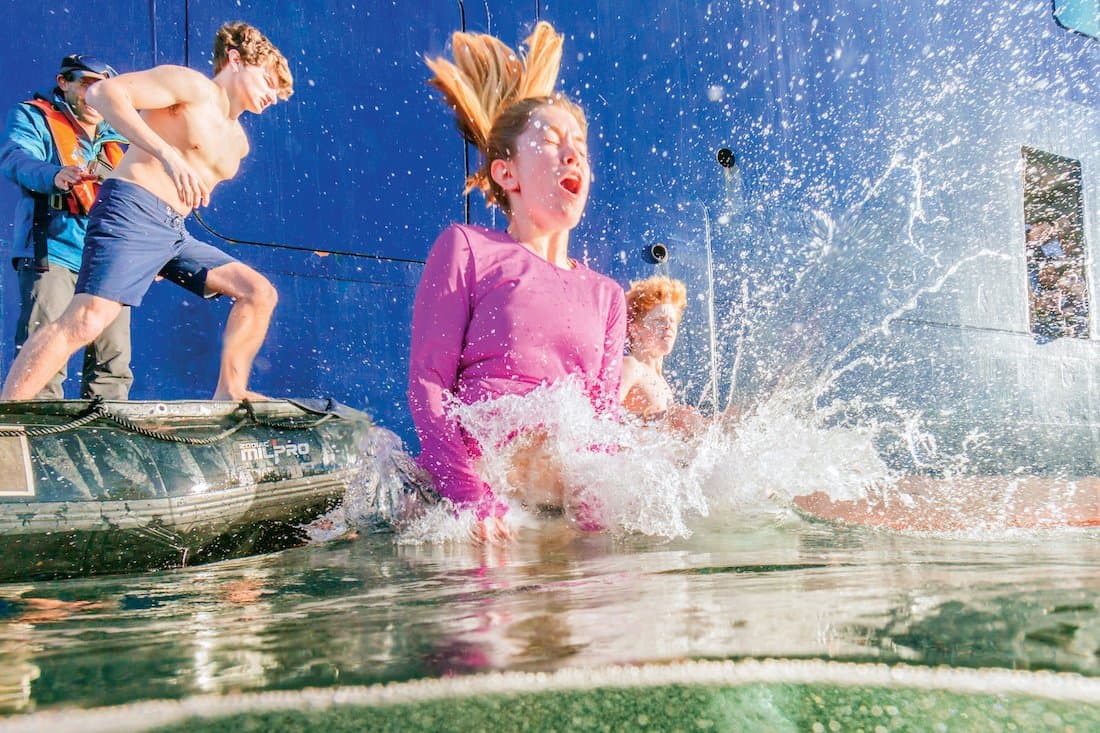
Photo: Andrew Peacock
Should you be worried about whales, seals or any other creatures in the water?
The polar plunge is a production that involves lots of clamorous noises and moving parts. Wildlife, even at its most curious, gives us a wide berth when we are flinging humans into the water. Seals, fish, or otters may peer from a distance, a wary audience. Although our field staff keeps a lookout, no wildlife has ever decided to participate in the polar plunge with us.
Are there optimal weather conditions for the plunge to happen?
The most unfavorable conditions for plunging are blustery ones; this isn’t because it makes our intrepid swimmers colder—they know what they signed up for—it is because we want to make sure that if we are drifting during the plunge we don’t get blown around too much. It’s harder to maneuver the ship and the Zodiacs during the plunge itself because there are so many vessels, people, and pieces of equipment to consider. A calm day and wide-open water allow us to focus on the thrills at hand without worrying about being washed into hazardous areas.
What should you do directly after you polar plunge?
Savor the tingles and zips of adrenaline running through your body and the bizarre feeling of warmth that permeates your limbs for a few minutes after you emerge. Grab that hot drink as I mentioned above, then head for your cabin and hog the shower for a few minutes so that your body stabilizes to a more balanced temperature. People are rarely as cold as they think they will be after the plunge; it’s the anticipation that can chill more!
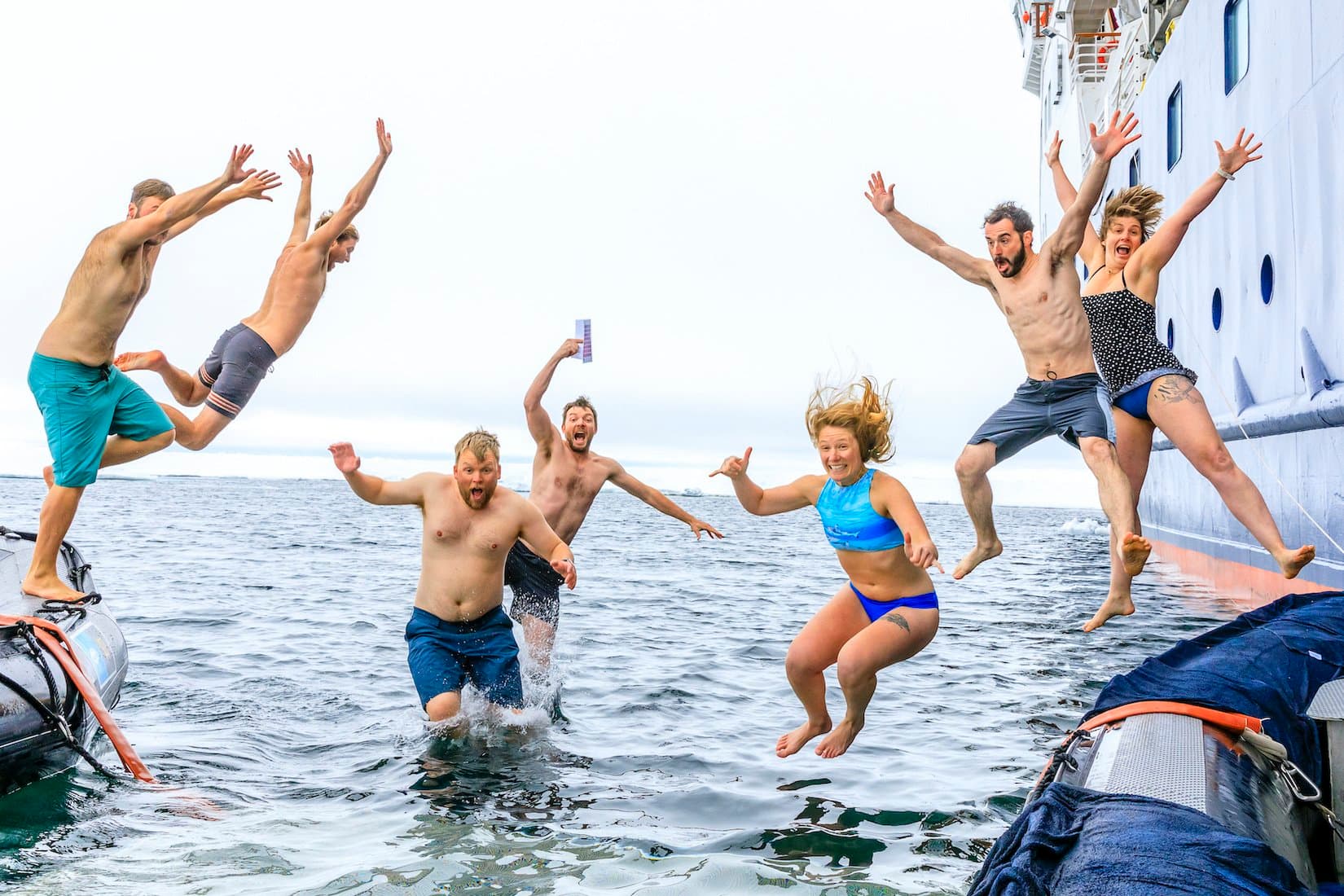
Photo: Ralph Lee Hopkins
What percentage of guests typically do a polar plunge?
Typical is a hard word to grapple with when sorting through the archives of Lindblad guests. I am unfailingly impressed by the number of people willing to rip off their clothes and jump into ice water—never less than about 15 percent, and at times nearly half of the folks on board. If guests don’t rise to the challenge en mass, crew will often fill out the ranks. I’ve seen captains jump in full dress uniform, entire galley teams leave their cook stations, and stewards gleefully splashing through the end of a long work contract.
How can you commemorate your plunge?
People are often quite eager to capture the hysterical and not always flattering expressions on the faces of their loved ones when their bodies hit the freezing water. I like to imagine these photos live rich and interesting lives on mantlepieces and at dinner parties once they return home! Because it is sometimes hard for the designated family photographer to get the ideal angle from their vantage point up on deck, we always have a photographer at water level during the plunge. These professionals are laser focused on capturing your moments on film and providing them to you in strikingly high resolution at no extra charge.
In addition, as a commendation for bravery (or folly, depending on your perspective) some ships have certificates or patches available that commemorate the once-in-a-lifetime event. Regardless of what ship you are sailing on, you can expect to leave the plunge with a renewed sense of vitality and hearty respect for the creatures who spend their lives in the polar seas.
Featured Itineraries
Related Videos

